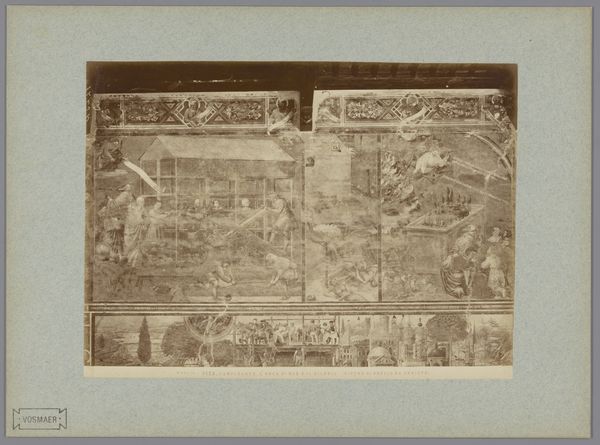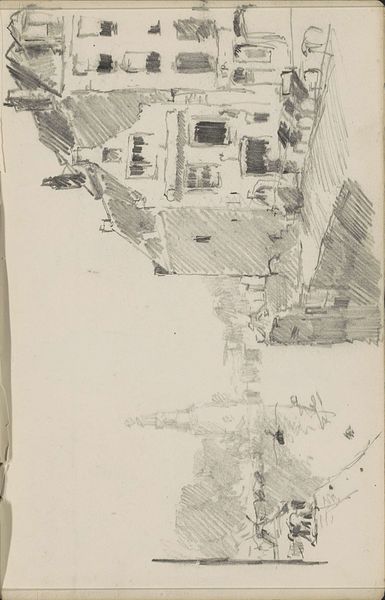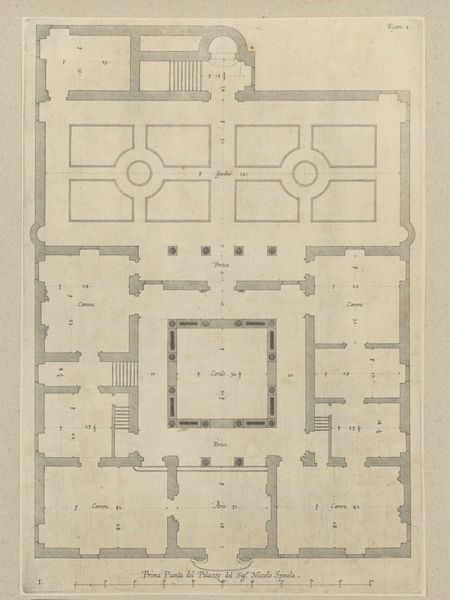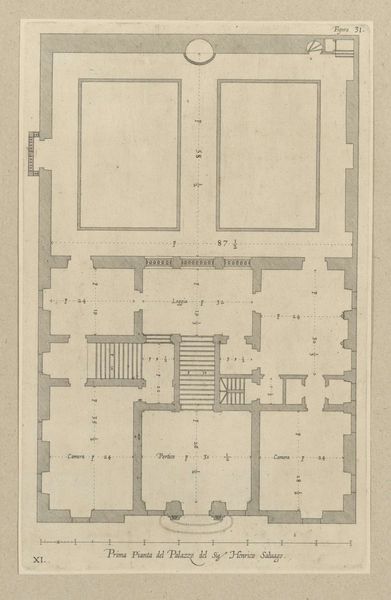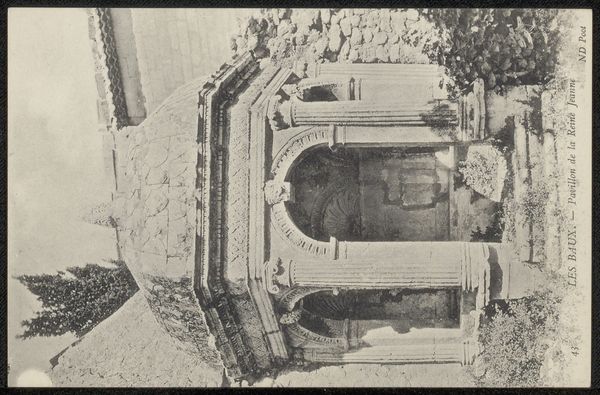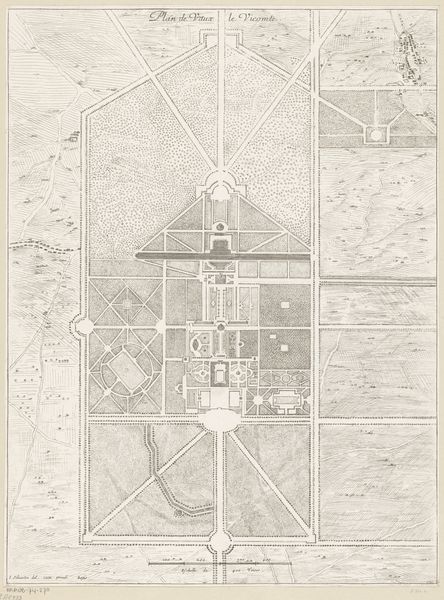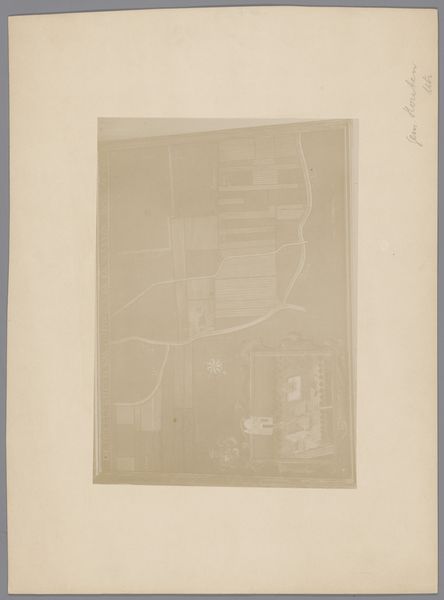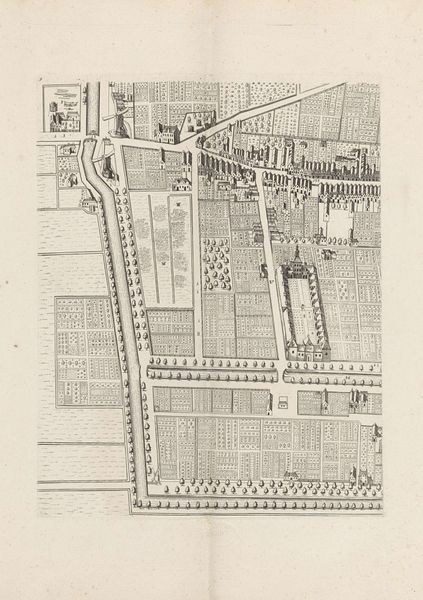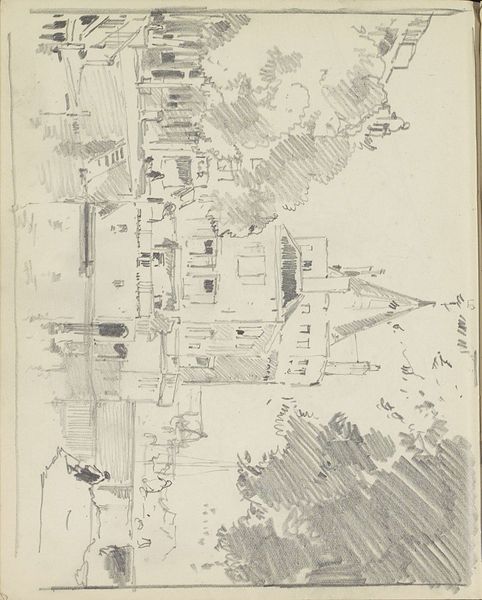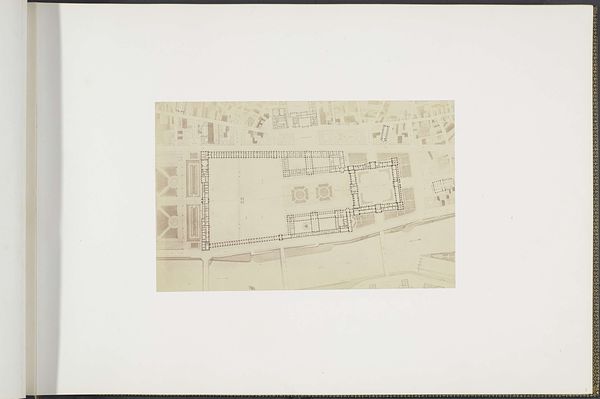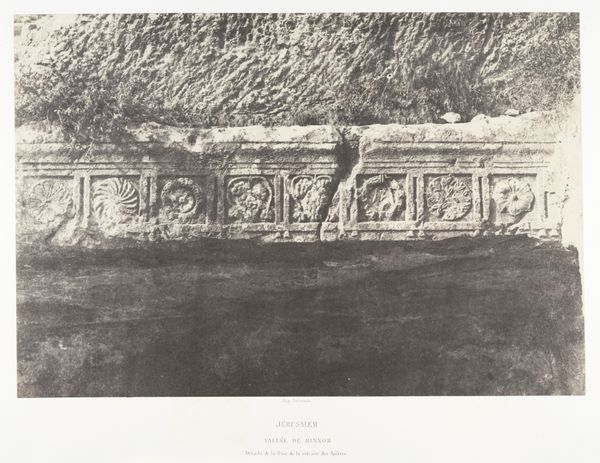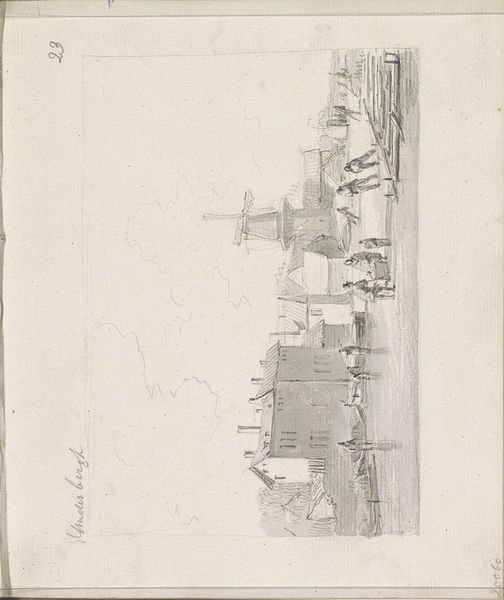
photography, albumen-print, architecture
#
landscape
#
photography
#
geometric
#
ancient-mediterranean
#
orientalism
#
islamic-art
#
albumen-print
#
architecture
Dimensions: height 275 mm, width 218 mm, height 559 mm, width 468 mm
Copyright: Rijks Museum: Open Domain
Curator: This is an albumen print by Félix Bonfils, created between 1867 and 1877, titled "Bewerkte plafond van de tempel van Bacchus in Baalbek"—or "Decorated ceiling of the Temple of Bacchus in Baalbek". The image captures an ornate ceiling. What are your initial impressions? Editor: The immediate impression is one of immense detail contrasted with decay. There's this beautiful, complex geometric pattern, but it's visibly cracked and worn. You can sense the weight of history, but also the fragility of cultural memory embedded within it. Curator: Precisely. Bonfils’s composition draws our eye upwards. Consider the interplay of light and shadow—the way the light reveals the textures, the carved details within those geometric shapes, particularly the striking six-pointed stars containing the faces or figures at their centers. The texture, line, and tone build visual complexity. Editor: It’s difficult to ignore the context in which Bonfils was operating. As a Western photographer in the Ottoman Empire, Bonfils played a role in shaping European perceptions of the "Orient." I'm immediately considering the orientalist lens at work and what was at stake with documenting architectural sites like this, especially considering Western Europe’s relationship with colonialism. Curator: That’s valid, but let's examine how he uses perspective to create depth. The symmetry and the repeating geometric motifs evoke a sense of grandeur but are also essential in the architecture itself; those patterns provide structure, distributing weight across the ceiling. And you can feel a kind of Islamic aesthetic tradition reflected here, or maybe some confluence of many different cultures and traditions at play. Editor: Yes, and consider how Bonfils's very act of photographing contributes to an imperial archive. Photography allowed for the 'collection' and categorization of foreign cultures and monuments, solidifying a Western gaze that positioned Europe as the primary interpreter and custodian of the world's history. The circulation of images like this reinforced power structures. We are talking about more than just style here. We’re examining historical power dynamics at work, through Bonfils. Curator: It is definitely about power too, and his compositional choices do more than just document—they celebrate the Temple’s complexity and sophistication. The stark contrast highlights the endurance of architectural genius against the ravages of time. The geometry serves an aesthetic function while referencing the underlying architecture that's carrying the weight, distributing forces through arches, pillars, and perfect polygons. Editor: Seeing these photographs, the damage makes me think of contemporary heritage preservation, or, perhaps, contestations over sites of historical importance within various groups. Perhaps Bonfils saw in these details a record of the site’s cultural value threatened. That preservation concern speaks loudly to today’s geopolitical context. Curator: Indeed, we are left contemplating how we interpret material history. Thanks for that crucial sociopolitical lens. Editor: Thank you. Understanding Bonfils and the colonial apparatus surrounding this photograph leaves me wondering what Baalbek might look like if it hadn't been subjected to so much looting and damage.
Comments
No comments
Be the first to comment and join the conversation on the ultimate creative platform.
